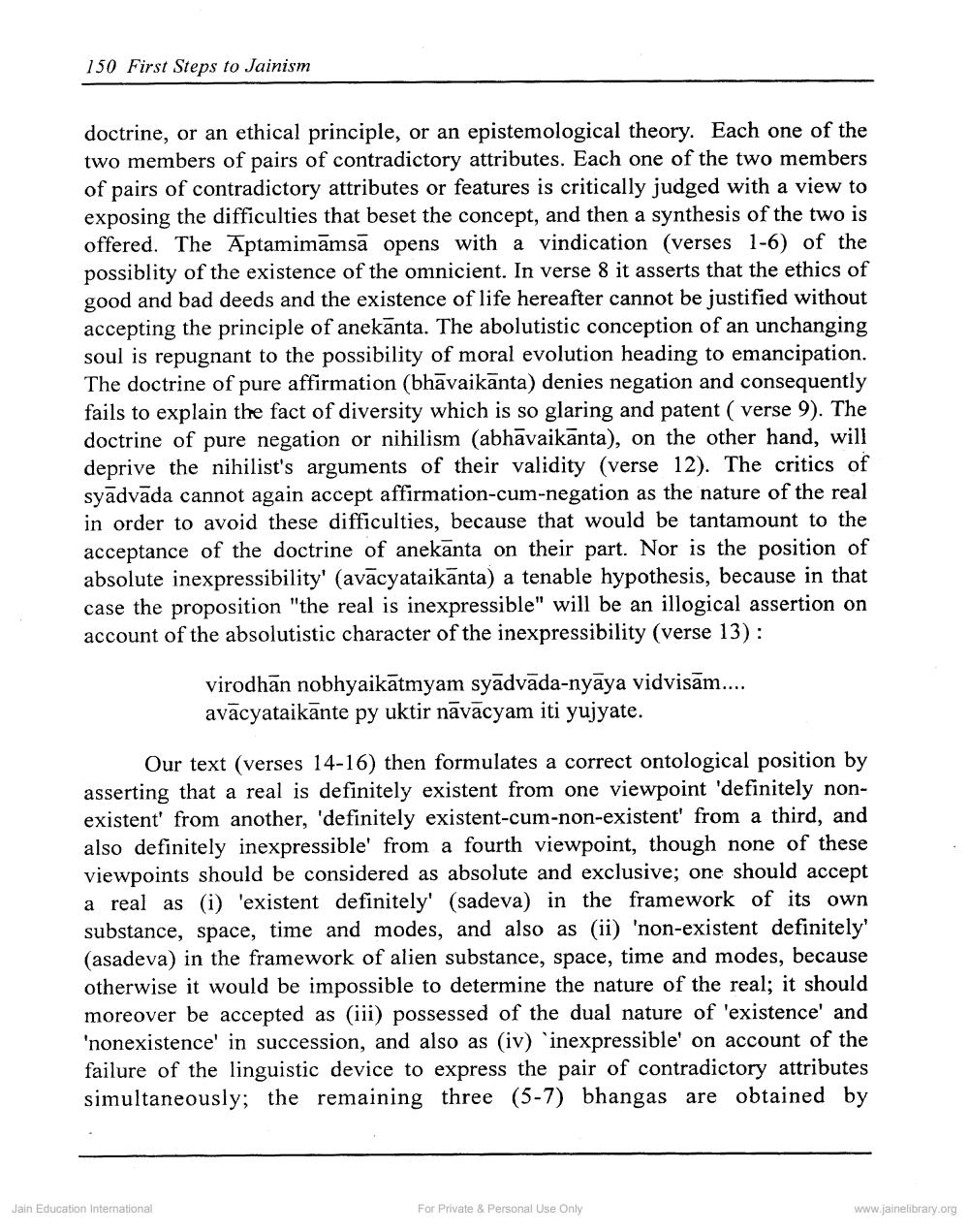________________
150 First Steps to Jainism
doctrine, or an ethical principle, or an epistemological theory. Each one of the two members of pairs of contradictory attributes. Each one of the two members of pairs of contradictory attributes or features is critically judged with a view to exposing the difficulties that beset the concept, and then a synthesis of the two is offered. The Aptamimāmsā opens with a vindication (verses 1-6) of the possiblity of the existence of the omnicient. In verse 8 it asserts that the ethics of good and bad deeds and the existence of life hereafter cannot be justified without accepting the principle of anekānta. The abolutistic conception of an unchanging soul is repugnant to the possibility of moral evolution heading to emancipation. The doctrine of pure affirmation (bhāvaikanta) denies negation and consequently fails to explain the fact of diversity which is so glaring and patent ( verse 9). The doctrine of pure negation or nihilism (abhāvaikanta), on the other hand, will deprive the nihilist's arguments of their validity (verse 12). The critics of syadvada cannot again accept affirmation-cum-negation as the nature of the real in order to avoid these difficulties, because that would be tantamount to the acceptance of the doctrine of anekanta on their part. Nor is the position of absolute inexpressibility' (avācyataikanta) a tenable hypothesis, because in that case the proposition "the real is inexpressible" will be an illogical assertion on account of the absolutistic character of the inexpressibility (verse 13):
virodhān nobhyaikātmyam syadvada-nyāya vidvisām.... avācyataikante py uktir nāvacyam iti yujyate.
Our text (verses 14-16) then formulates a correct ontological position by asserting that a real is definitely existent from one viewpoint 'definitely nonexistent' from another, 'definitely existent-cum-non-existent' from a third, and also definitely inexpressible' from a fourth viewpoint, though none of these viewpoints should be considered as absolute and exclusive; one should accept a real as (i) 'existent definitely' (sadeva) in the framework of its own substance, space, time and modes, and also as (ii) 'non-existent definitely (asadeva) in the framework of alien substance, space, time and modes, because otherwise it would be impossible to determine the nature of the real; it should moreover be accepted as (iii) possessed of the dual nature of 'existence' and 'nonexistence in succession, and also as (iv) 'inexpressible on account of the failure of the linguistic device to express the pair of contradictory attributes simultaneously; the remaining three (5-7) bhangas are obtained by
Jain Education International
For Private & Personal Use Only
www.jainelibrary.org




